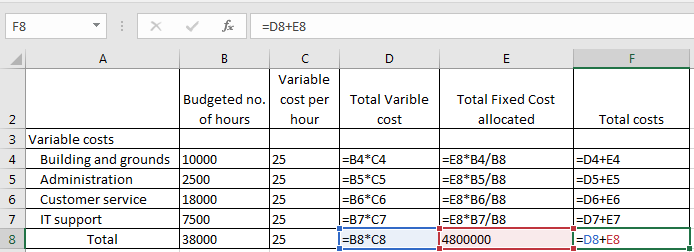1. Using a single-rate allocation and budgeted usage, how much will each department be allocated? 2. Using a dual-rate allocation with fixed costs allocated according to budgeted hours and variable costs allocated to actual hours, how much overhead will each department be allocated?
Variance Analysis
In layman's terms, variance analysis is an analysis of a difference between planned and actual behavior. Variance analysis is mainly used by the companies to maintain a control over a business. After analyzing differences, companies find the reasons for the variance so that the necessary steps should be taken to correct that variance.
Standard Costing
The standard cost system is the expected cost per unit product manufactured and it helps in estimating the deviations and controlling them as well as fixing the selling price of the product. For example, it helps to plan the cost for the coming year on the various expenses.
The fixed costs of operating the Srepta Corp. are $4,800,000 annually. Variable costs are incurred at the rate of $25 per maintenance-hour. On average, the company incurs 38,000 maintenance-hours per year. Budgeted and actual hours per user for 2019 are as follows:
|
|
Budgeted hours |
Actual hours |
|
Building and grounds |
10,000 |
9,800 |
|
Administration |
2,500 |
1,600 |
|
Customer Service |
18,000 |
22,500 |
|
IT support |
7,500 |
7,800 |
|
Total |
38,000 |
41,700 |
Assume that budgeted maintenance-hours are used to calculate the allocation rates.
1. Using a single-rate allocation and budgeted usage, how much will each department be allocated?
2. Using a dual-rate allocation with fixed costs allocated according to budgeted hours and variable costs allocated to actual hours, how much
Each department is allocated cost in the single-rate allocation of cost based on usage of budgeted hours.

Formulation:

Trending now
This is a popular solution!
Step by step
Solved in 2 steps with 4 images









